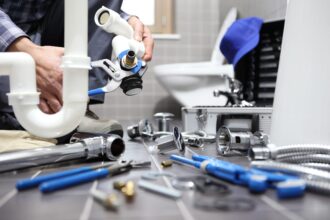In the rapidly evolving automotive industry, ensuring the quality and reliability of auto parts is paramount. Traditional inspection methods, often reliant on manual checks, are increasingly being supplemented or replaced by advanced technologies. Among these, Automated Optical Inspection (AOI) systems and machine vision systems have emerged as pivotal tools in enhancing the precision and efficiency of auto parts inspection.
Understanding AOI Systems and Machine Vision in Automobile Parts Inspection
Automated Optical Inspection (AOI) systems utilize optical methods to automatically inspect various aspects of auto parts during manufacturing. By capturing high-resolution images and analyzing them through sophisticated algorithms, AOI systems can detect defects such as surface irregularities, dimensional inaccuracies, and assembly errors. This automation minimizes human error and ensures consistent quality control.
Machine vision systems, encompassing AOI, involve the use of cameras and image processing software to emulate human vision. In the context of auto parts inspection, these systems can perform tasks such as presence verification, measurement, and defect detection at speeds and accuracies beyond human capabilities.
Advantages of Implementing AOI and Machine Vision Systems
- Enhanced Accuracy and Consistency: These systems can detect minute defects that might be overlooked by human inspectors, ensuring a higher level of quality assurance.
- Increased Throughput: Automated inspections can be performed rapidly, keeping pace with high-speed production lines and reducing bottlenecks.
- Data Collection and Analysis: Machine vision systems can collect vast amounts of data during inspections, facilitating trend analysis, predictive maintenance, and continuous improvement initiatives.
- Cost Efficiency: By reducing the reliance on manual inspections and minimizing the risk of defective products reaching the market, these systems can lead to significant cost savings over time.
Challenges in Implementing AOI and Machine Vision Systems
While the benefits are substantial, integrating these technologies into existing manufacturing processes presents certain challenges:
- High Initial Investment: The cost of acquiring and setting up advanced inspection systems can be substantial. For example, dealerships interested in implementing UVeye’s technology face costs of approximately $5,000 per month, which can be prohibitive for smaller businesses.
- Complexity of Inspection: Automobile parts come in diverse shapes, sizes, and materials, requiring adaptable inspection systems that can accommodate these variations.
- Detection of Micro-Defects: Identifying microscopic defects, such as hairline cracks or minuscule surface inconsistencies, demands ultra-high-resolution imaging and precise analytical algorithms.
Future Trends in Auto Parts Inspection
The landscape of auto parts inspection is continually evolving, with several trends shaping its future:
- Integration with Artificial Intelligence (AI): Combining machine vision with AI enhances the system’s ability to learn from data, improving defect detection rates and reducing false positives.
- Real-Time Monitoring: Advancements in processing speeds enable real-time inspection and feedback, allowing for immediate corrective actions and reducing waste.
- Enhanced Imaging Technologies: The development of higher-resolution cameras and advanced lighting techniques improves the system’s ability to detect subtle defects.
- User-Friendly Interfaces: Modern systems are being designed with intuitive interfaces, making it easier for operators to set up inspections, interpret results, and maintain the equipment.
The adoption of Automated Optical Inspection and machine vision systems is revolutionizing the inspection of auto parts, leading to higher quality products and more efficient manufacturing processes. While challenges such as high initial costs and system complexity exist, the long-term benefits of enhanced accuracy, increased throughput, and valuable data insights make these technologies a worthwhile investment for manufacturers aiming to maintain competitiveness in the automotive industry.














